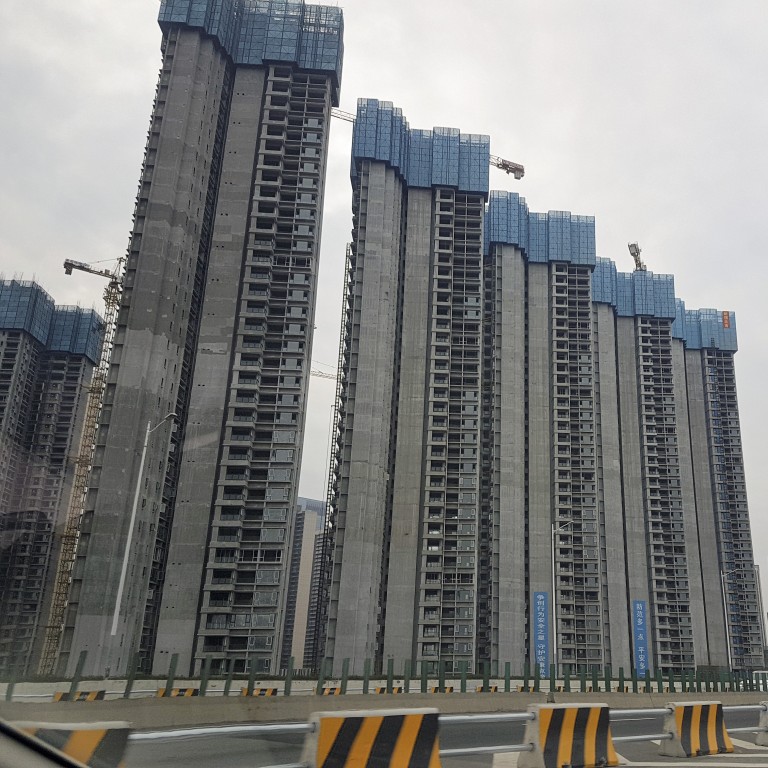
Chinese builders face a tough choice: sacrifice profit now to generate cash or wait for better times
- Increasingly, developers face hard trade-off: to sell homes cheaply now or to wait for an easing of price controls and credit lines
- The huge discounts involved have been drawing hoards of potential buyers, who have in turn shunned more expensive lived-in homes
Chinese developers are increasingly being forced to sell their new units at losses, or close to cost, in order to get buyers into their showrooms and generate cash, amid a clampdown on financing that forms part of the government’s campaign to pare back debt.
The huge discounts involved have been drawing hoards of potential buyers, who have in turn shunned more expensive lived-in homes and new units that are charging market rates.
Yanlord Riverbay, a project in downtown Chengdu by Singaporean builder Yanlord Land, recently attracted over 12,000 entries to a lottery process to compete for just 207 new flats priced at 19,000 to 21,500 yuan per square metre. That is a discount of about a quarter on the last phase, sold in October 2016, and far below its second-hand homes which currently fetch more than 30,000 yuan per sq m.
Shenzhen sells five plots at record prices in biggest land tender since 200
A prime project by China Resources Land drew 11,000 subscriptions for 356 flats priced at 16,000-17,600 yuan per sq m, compared with 25,000 yuan for second-hand homes in the same district.
Both projects cleared their offerings on the first day of sales.
“Cash flow is the king. In the face of a tightening of funding and no sign of price curbs being eased, some developers are compromising their margin for faster cash collection. More developers could follow,” said Lu Wenxi, a senior research manager with Centaline Shanghai.
Though the practice erodes developer’s profitability, it gives them much-needed cash flow that reduces their dependence on bank financing.
Price caps introduced by various city governments across the country have also contributed to the trend.
To be sure, some analysts believe the below-cost sales are exceptions, rather than the industry norm.
“The two projects are outliers. Locals now are only drawn by bargain opportunities and shun projects with normal prices. Amid abundant supply a recent project in an outlying area just received subscriptions of less than 5 per cent,” said Yan Tao, a Chengdu-based analyst with consultancy CRIC.
In Shanghai the regulation is slightly different. New tranches of a projects are not allowed to sell for more than earlier phases or nearby projects, no matter what the original cost of the site. For developers who bought land at its peak in 2015-2016, that can be particularly painful.
Poly Development and Sunac China Holdings, who bought land in Shanghai at record prices, opted for short-term pain, selling their projects at losses this year to recover funds quickly.
Sunac started selling a project in Shanghai early this year at 48,000 yuan per sq m, even though the land price exceeded 38,000 yuan. Analysts said that would means losses.
Other developers have decided to hang in there, in the hopes that the market will pick up again. “Different developers have different funding costs and a different outlook on policy. Those with lower funding costs and a sanguine outlook choose to wait,” said Soochow Securities analyst Rhys Qi.

